By Debbie Augustine, March 6, 2023
March is Women’s History Month when we remember the accomplishments of women throughout our past. And what better place to begin for champions of amendment-driven movements than with the suffragists? They helped pass the 19th Amendment giving American women the right to vote.
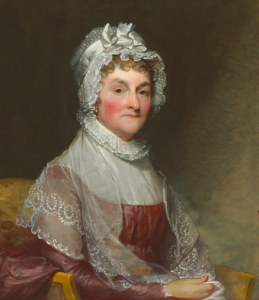
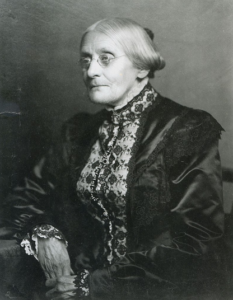
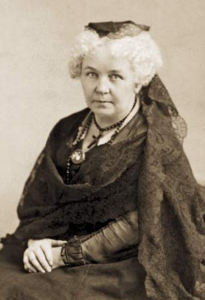
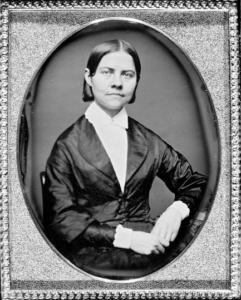
Here are the ladies checking our progress, peering into the present day from many years past:
(L to R) Abigail Adams, Susan B. Anthony, Elizabeth Cady Stanton, Lucy Stone.
As far back as March 31, 1776, eventual First Lady Abigail Adams, wrote to her husband, John, asking him to “remember the ladies.” …“If particular care and attention is not paid to the ladies, we are determined to foment a rebellion, and will not hold ourselves bound by any laws in which we have no voice or representation.” Alas, she and the ladies were promptly forgotten by him and the other founders. It would be 144 years before Congress passed the 19th Amendment.
During those many years, the suffragists organized, picketed, petitioned, marched, wrote, vigilled, lobbied, sued, and even starved their way to victory — all while being ridiculed, jailed, and sometimes physically abused by their foes. They were led by the likes of Susan B. Anthony and Elizabeth Cady Stanton — and a less well-known 19th-century suffragist/abolitionist, Lucy Stone. She actually inspired Anthony to take up the suffrage cause.
Ironically, Stone’s influence remains with American women today, although perhaps unbeknownst to them. At her wedding in 1855, Stone declared that she’d be keeping her maiden name. Women following her example called themselves “Lucy Stoners.” Maybe these plucky females were the original “stoners.”
Different Paths to the Amendment
The approaches to women’s suffrage varied. Stone and other abolitionists worked with Frederick Douglass to pass a 15th amendment giving black men voting rights, thinking it would eventually lead to a women’s vote. This caused bitter infighting amongst the activists and when the amendment was passed in early 1869, it split the movement. Two rival national suffrage organizations were formed in response.
Stanton, Anthony, and others focused on obtaining a federal constitutional amendment. Stone and her followers concentrated on state suffrage amendments. By 1890, the two groups merged to help ratify enough state amendments to force Congress to approve a federal amendment.
Fast-forward to 1917 when New York adopted woman suffrage, and 1918 when President Wilson finally agreed to support an amendment. By mid-1919, Congress ratified it, as did the needed 36 states on August 18, 1920. The 19th amendment was added to the U.S. Constitution on August 26, 1920, changing the face of America’s electorate forever.
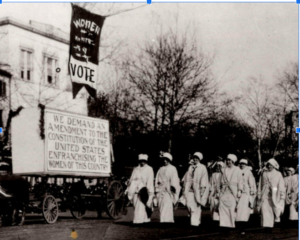
How does Wolf-PAC compare to the Suffragists in Our Quest for a 28th Amendment?
Remarkably well. We also see working with the states as the best way to achieve a constitutional amendment — and equal representation for our electorate. We too are a national movement of determined individuals from diverse political backgrounds. We collaborate with other pro-amendment, anti-corruption organizations to advance our cause. We know that teamwork makes the dream work… eventually. Most importantly, we won’t quit until we’ve achieved our mission.
Perhaps someday a month will be designated to celebrate free and fair elections. Until then, we persevere… until we prevail. We fight. Wolf-PAC is how we fight. Join us — volunteer or become a supporter today!
Acknowledgments
The Wolf-PAC all-volunteer Communications Team created this post!
- Editing by Khadija Fouad
Sources
- West Virginia Public Broadcasting. (2020, August 25). 100 Years Ago – Abigail Adams Advocates for Women’s Suffrage. Retrieved March 5, 2023, from, https://wvpublic.org/100-years-ago-abigail-adams-advocates-for-womens-suffrage/
- National Archives. 19th Amendment to the U.S. Constitution: Women’s Right to Vote (1920). (2022, February 8). Retrieved March 5, 2023, from https://www.nps.gov/wori/learn/historyculture/susan-b-anthony.htm
- Monmouth University, Guggenheim Memorial Library. (n.d.). LibGuides: Women’s Suffrage Centennial: The Final Push for the Vote. Retrieved March 5, 2023, from https://www.nps.gov/wori/learn/historyculture/elizabeth-cady-stanton.htm
- Women’s Rights National Historical Park (U.S. National Park Service). (n.d.). Susan B. Anthony. Retrieved March 5, 2023, from https://www.nps.gov/wori/learn/historyculture/lucy-stone.htm
- Women’s Rights National Historical Park (U.S. National Park Service). (n.d.). Elizabeth Cady Stanton. Retrieved March 5, 2023, from https://www.archives.gov/milestone-documents/19th-amendment
- Women’s Rights National Historical Park (U.S. National Park Service). (n.d.). Lucy Stone. Retrieved March 5, 2023, from https://guides.monmouth.edu/Womens_Suffrage/Final_Push
